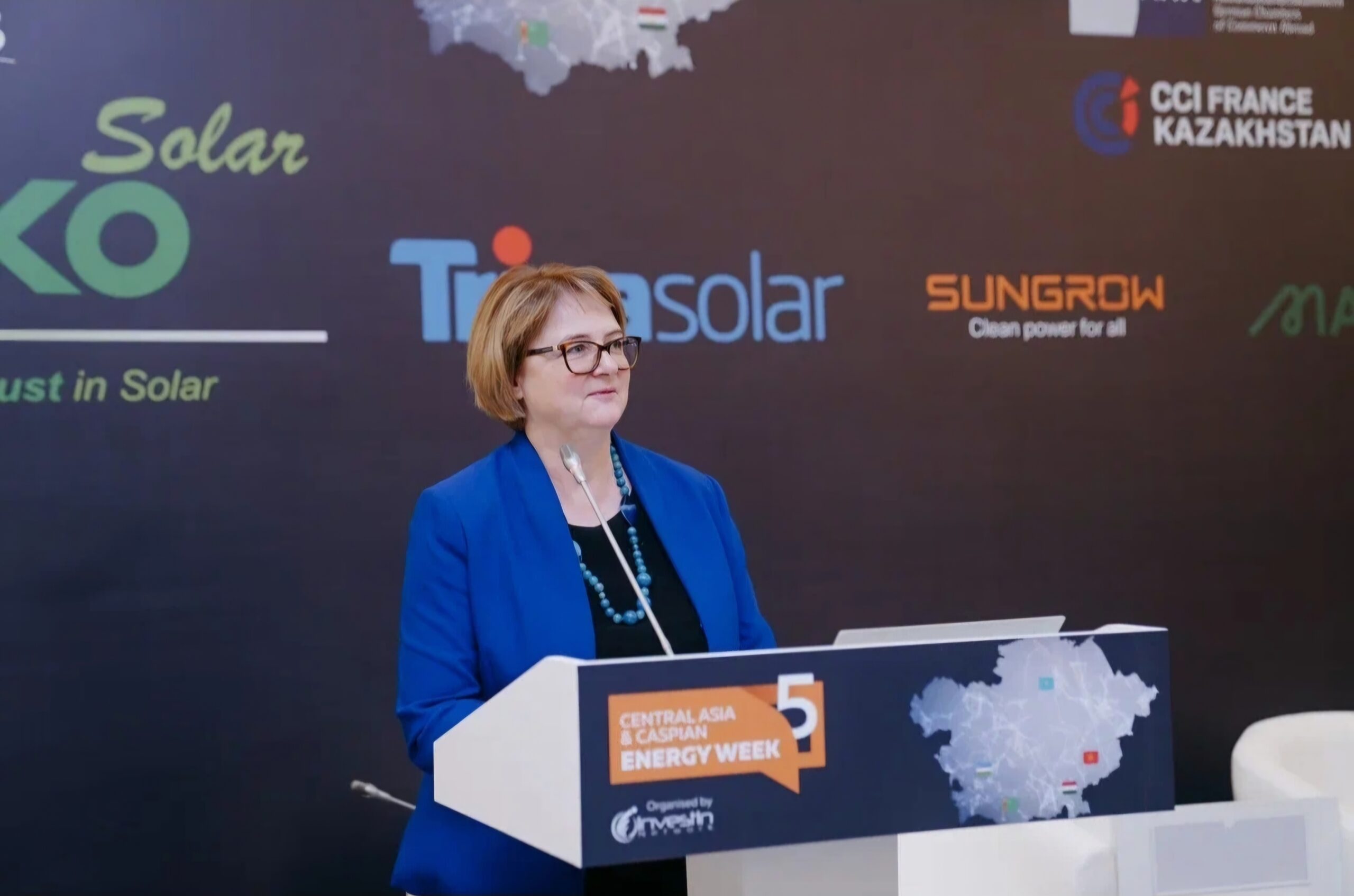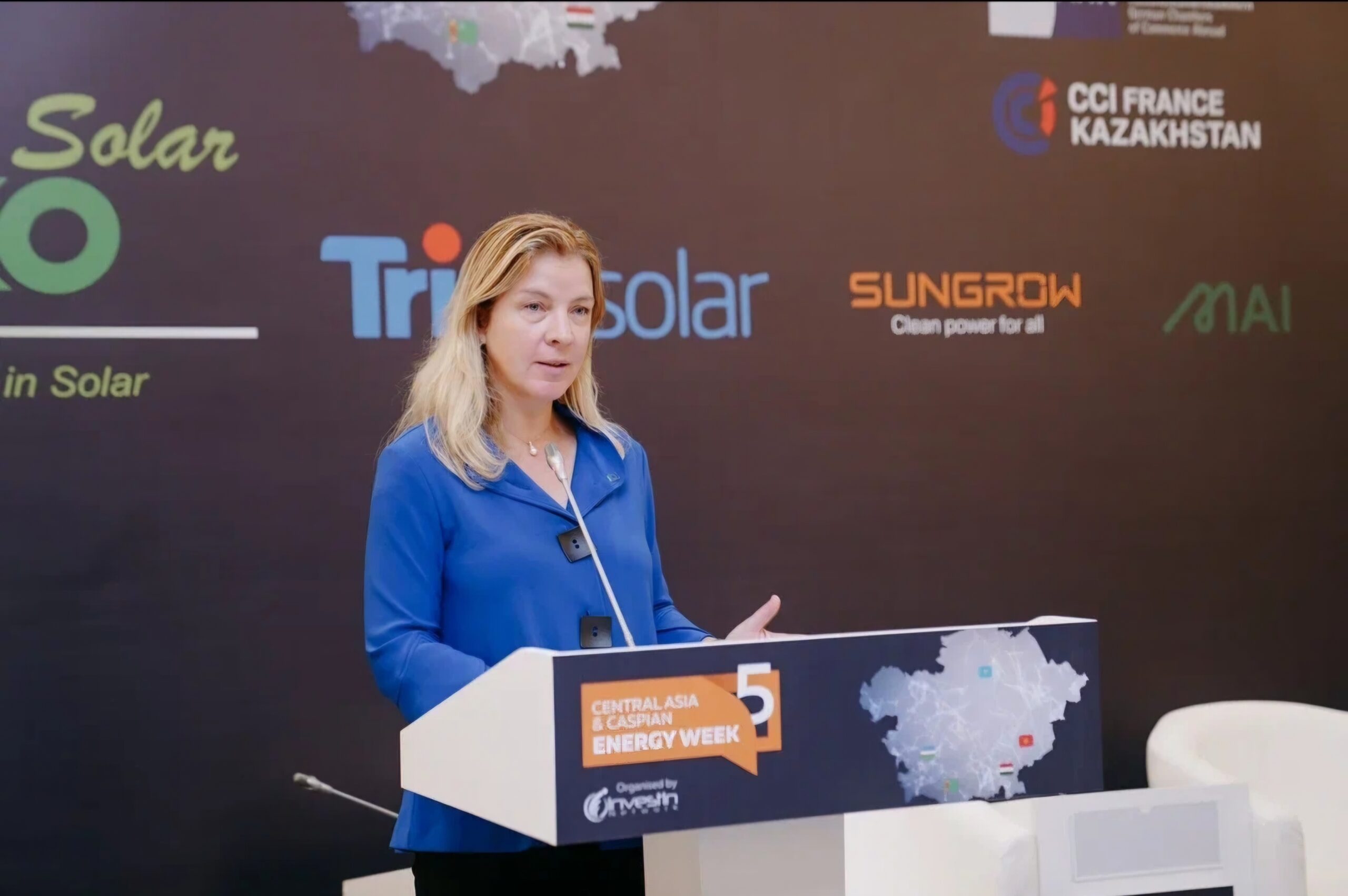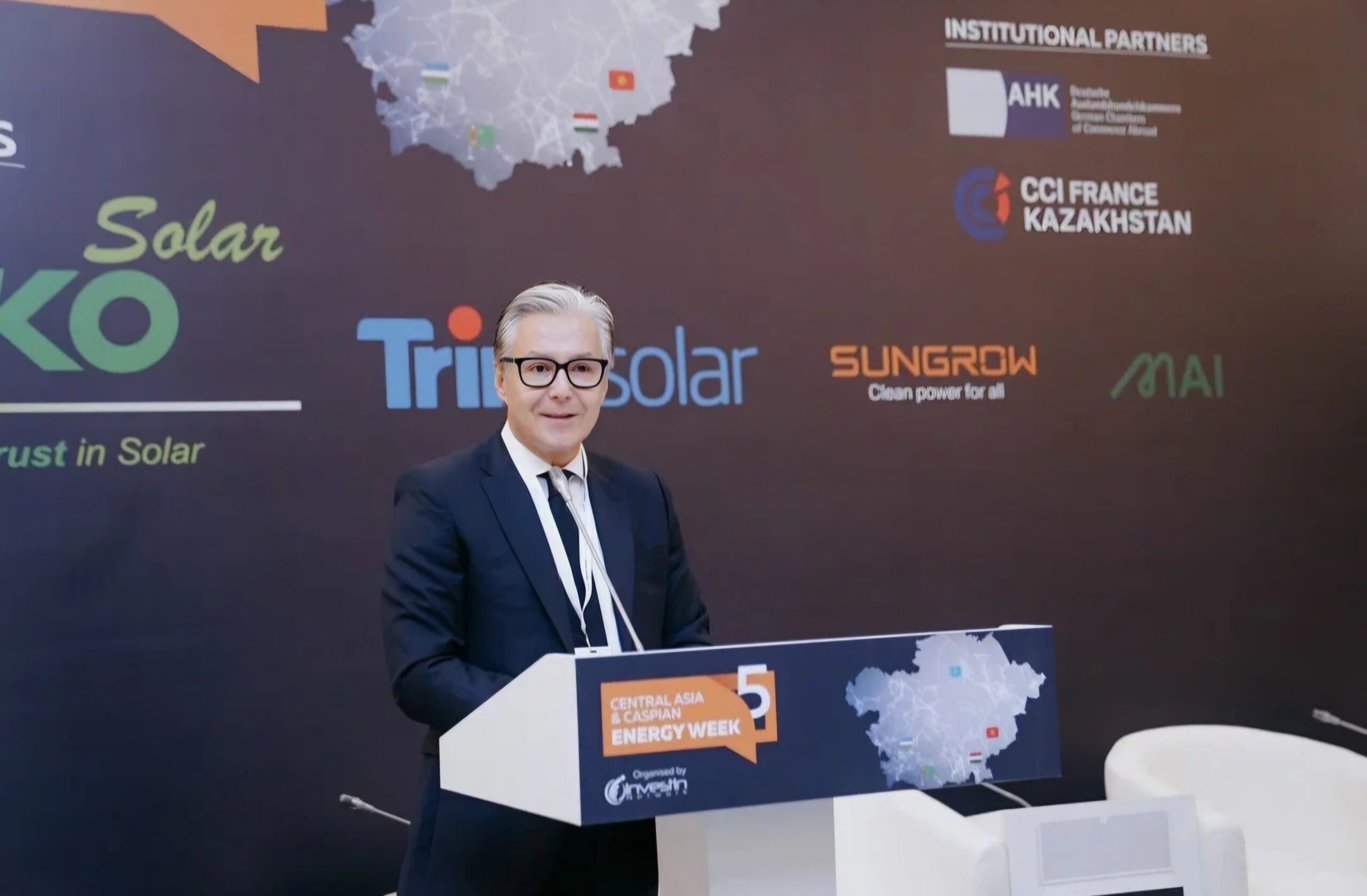ASTANA – Energy Week Central Asia and Caspian 2024 took place on Sept. 5-6 in Astana, focusing on the region’s green transition. The event featured in-depth discussions on policy and regulatory frameworks, financing renewable energy, and technology-specific projects, including solar PV, storage, wind energy, green hydrogen, and hydropower.

Kamila Auyezova, regional manager for Central Asia and the Caspian at Invest In Network, noted that this marks the fifth event they’ve organized in Central Asia, focused on advancing renewable energy deployment in emerging markets. Photo credit: Invest In Network
The region’s substantial untapped renewable energy potential and favorable conditions were underscored by participants.
Addressing the participants, Katarzyna Wawiernia, Resident Representative of the United Nations Development Programme (UNDP) in Kazakhstan, emphasized the triple planetary crisis of climate disruption, biodiversity loss, and escalating pollution. She identified clean and affordable energy as a crucial solution to these interconnected challenges.
“Under the UN Energy Pledge, the UNDP Strategic Plan for 2022 to 2025 prioritizes energy access as a core mission. The plan aims to mobilize partners to provide sustainable, affordable, and reliable energy to 500 million more people globally by 2025,” she said.
Wawiernia acknowledged Kazakhstan as one of the nations committed to a greener future, aiming for carbon neutrality by 2060. She highlighted UNDP’s support for the Kazakh government in these efforts, particularly under the Paris Agreement.
“Since 2019, the UNDP has implemented the De-risking Renewable Energy Investment methodology in Kazakhstan. This approach strategically targets interventions to create a favorable risk-return profile, encouraging private investment in renewable energy. The adaptation of this methodology led to the establishment of a site-specific renewable energy auction system in 2018. This system has been transformative, offering the lowest price per kilowatt for green energy and making a significant impact on Kazakhstan’s renewable energy landscape,” she said.
Wawiernia also noted UNDP’s efforts in supporting small-scale renewable energy initiatives, emphasizing the impact of legislative amendments that fostered the growth of small-scale renewable energy sources in Kazakhstan.
“The impact of this effort is significant. According to estimates, the implementation of rooftop solar installation in just 5-10% of households across the country would be equivalent to the energy output of a large thermal power plant with a capacity of 500-1000 Megawatts,” she said.
According to Wawiernia, the challenges of energy transition and decarbonization go beyond the capacity of any single nation or institution. Collective action is essential to achieve the systemic changes required for a global shift towards renewable energy and inclusive green economies.
Insights for Kazakhstan’s path forward
Kathy Leach, British Ambassador to Kazakhstan, observed a positive shift in energy discussions during her three-year tenure in the country.
“The extent of the problems in existing infrastructure has become starkly apparent. The need for tariff reform to undertake sustainable, ongoing investment and energy efficiency was underlined again by President Kassym-Jomart Tokayev in his recent state-of-the-nation address. There is real movement in extending and modernizing the grid,” she said.

Kathy Leach, British Ambassador to Kazakhstan noted the positive progress in energy discussions over the past three years she has served in the country. Photo credit: Invest In Network
Leach emphasized the critical role of policymakers and business leaders in implementing actionable policies that will attract the necessary investment.
For Kazakhstan to achieve its green transformation, she believes that investment must be swift and substantial. Such a transformation could drive the development of a high-tech, sustainable 21st-century economy in Kazakhstan, creating jobs and new opportunities.
Leach also shared valuable lessons from the United Kingdom’s energy transition that might resonate with current discussions. These include the shift away from coal, modernization of electricity grids, battery storage, and strategies for industrial decarbonization.
“The UK used to rely heavily on coal power, just as Kazakhstan does today. It used to generate four-fifths of our electricity until gas replaced some of that capacity in the 1990s. However, the most significant change occurred over the past 16 years, with coal’s contribution to electricity generation dropping from over 40% to just 1% last year,” said Leach.
She highlighted the UK’s goal to fully decarbonize its power sector by 2035, illustrating that rapid progress is possible with the right policy frameworks.
Leach agreed with Wawiernia on the importance of both large-scale and small-scale renewable solutions. She emphasized that Kazakhstan, with its expansive landscape, stands to benefit significantly from these initiatives to address local challenges and create new opportunities.
Regional cooperation for sustainable growth
Aleska Simkic, Ambassador of the European Union (EU) to Kazakhstan, underscored the crucial connection between energy and climate change, highlighting the EU’s dedication to advancing clean energy, energy efficiency, and sustainable solutions for communities, businesses, and industries throughout Europe, Kazakhstan, and Central Asia.

Aleska Simkic, Ambassador of the European Union to Kazakhstan, addressed the critical link between energy and climate change. Photo credit: Invest In Network
Simkic pointed out the severe impacts of climate change experienced in Europe and Central Asia, such as intense fires, floods, and environmental degradation.
“We have witnessed the increasing frequency and impact of extreme weather events, and this region is no exception. The urgency of the energy transition is clear,” she said.
She introduced the Carbon Border Adjustment Mechanism (CBAM), which took effect in 2023 with a two-year transition period. This mechanism is designed to ensure a fair distribution of the costs associated with the global green transition.
“We hope this transition period will allow for preparation and effective application of the new conditions. As Central Asian countries adopt new economic policies, we encourage them to anticipate the requirements needed to remain competitive in the EU market and to be also interoperable with the rules of the EU market,” she said. “Compatibility with the CBAM, alignment with other green deal policies, and emission trading systems will be essential. Embracing green hydrogen and following EU green trends can enhance the competitiveness of Central Asian products in the EU market. Conversely, failure to adapt may impact their competitiveness.”
Luis Rivera, USAID Central Asia Regional Mission Director, views regional energy cooperation as a key driver of economic growth and long-term sustainability.

Luis Rivera, USAID Central Asia Regional Mission Director. Photo credit: Invest In Network
He highlighted USAID’s flagship initiative, USAID Power Central Asia, which supports all five Central Asian countries in reaching their energy objectives.
“Through this program, we are implementing energy sector reforms and helping countries meet their clean energy objectives, including renewable energy, energy efficiency, and regional integration. We are also supporting the creation of new energy markets,” he said.
Kazakhstan’s achievements and ambitious goals
According to the Kazakh Energy Ministry’s data, the country currently operates 148 renewable energy facilities with a total installed capacity of 2,900 megawatts (MW). In the first half of the year, these renewable sources generated 3.8 billion kilowatt-hours (kWh) of electricity, representing 6.47% of the country’s total electricity production.
By the end of 2024, Kazakhstan plans to inaugurate six additional renewable energy projects with a combined capacity of 196.9 MW.
The Unified Electric Power System aims to incorporate 12.7 gigawatts (GW) of renewable energy capacity and 40 GW for green hydrogen production by 2032.


